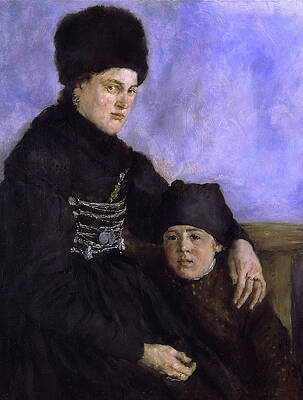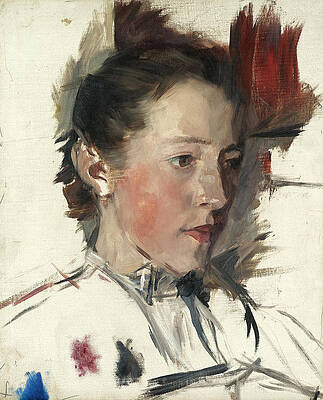Wilhelm Maria Hubertus Leibl
Paintings
Dachau Woman and Child
Peasant Girl
Farm Girl

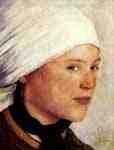
Farmer girl with white headscarf
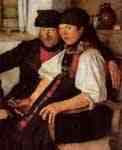





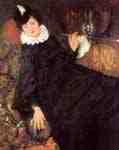
The young Parisian woman ( The cocotte )


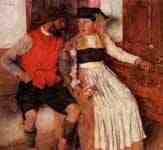
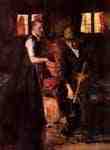
In the kitchen (kitchen in Kutterling )

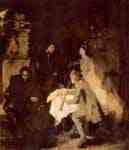
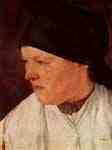
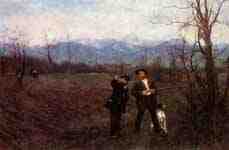
Leibl and Sperl on the chickens hunt

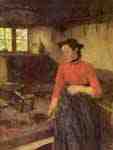

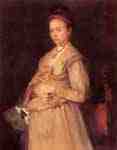

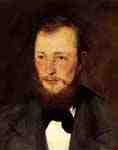
Portrait of Dr. Friedrich Raue
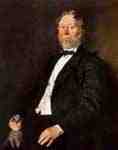
Portrait of Johann Heinrich Pallenberg
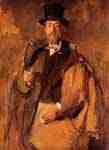
Portrait of the painter Paul von Szinyei - Merse
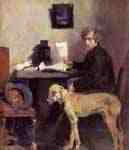
Portrait of the Painter Sattler with his Great Dane
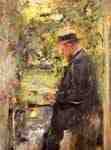
Portrait of veterinarian Dr. Reindl in the arbor



Knitting girls on the bench by the stove
Drawings

Old peasant woman ( The " Tumin " ) and a young peasant woman at the table


Farmer at the table, stuffing his pipe

Farmer at the table, stuffing his pipe

Farmer with tobacco pipe , two girls in the background

Farmer and his wife in half figure



Peasant girl at the front door


The Hunter

The painter Ferdinand White front of the easel


The " Malresl " in the kitchen

The " Malresl " ( Marie Ebersberg ) in the kitchen



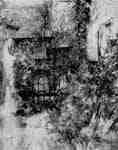
Garden angle with fence and houses

Dog and garment study »Table Society "

Leibl's mother on her deathbed

Leibl's mother by the hand work





Upper Bavarian peasant girl ( Portrait of Kathi Barth in Aibling )

Portrait of Woman Reading by Poschingerstraße




Portrait of an old peasant woman ( The " Tumin " )

Portrait of an old peasant woman ( The " Tumin " ) in front of the window

Portrait of an old peasant woman ( The " Tumin " )

Portrait of a Inntalerin with flat hat




Portrait of a girl with fur hat ( The " Wabn ," Babette Jordan , now wife Babette Maurer )




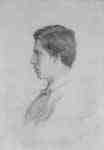





Study for the painting " poacher "

Study for the painting " poacher "

Study for the painting " poacher "

Study for the painting " poacher "

Study for the painting " poacher "

Study for the painting " poacher "

Study for the painting " poacher "

Study for the painting " poacher "

Study for the painting " poacher "

Study for the painting " poacher "

Study for the painting " poacher "

Study for the painting " poacher "

Study for the painting " poacher "

Study for the painting " poacher "

Study for the painting " poacher "

Study for the painting " poacher "





Two girl sticking at the table

Fine Art Prints | Greeting Cards | Phone Cases | Lifestyle | Face Masks | Men's , Women' Apparel | Home Decor | jigsaw puzzles | Notebooks | Tapestries | ...
Wilhelm Maria Hubertus Leibl (October 23, 1844 – December 4, 1900) was a German realist painter of portraits and scenes of peasant life.
He was apprenticed to a locksmith before beginning his artistic training with the local painter Hermann Becker in 1861. He entered the Munich Academy in 1864, subsequently studying with several artists including Carl Theodor von Piloty. He set up a group studio in 1869, with Johann Sperl, Theodor Alt, and Rudolf Hirth du Frênes. At about the same time, Gustave Courbet visited Munich to exhibit his work, making a considerable impression on many of the local artists by his demonstrations of alla prima painting directly from nature.
Leibl's paintings, which already reflected his admiration for the Dutch old masters, became looser in style, their subjects rendered with thickly brushed paint against dark backgrounds.
Career
In 1869, following Courbet's suggestion,[3] Leibl went to Paris, where he was introduced to Édouard Manet, but was forced to return to Germany in 1870, due to the outbreak of the Franco-Prussian War.[1] In 1873 Leibl left Munich for the isolated Bavarian countryside, where he depicted the local peasants in everyday scenes devoid of sentimentality or anecdote. The sketchlike quality of his earlier paintings was replaced by greater precision and attention to drawing. Living from 1878 to 1882 in Berbling, he painted perhaps his best-known work, the Three Women in Church (Kunsthalle, Hamburg). Its intensely realistic style recalls Hans Holbein in its clarity of definition. During the following years he moved to the town of Bad Aibling and, in 1892, to Kutterling, as his paintings united the disciplined drawing he had adopted in the 1880s with a new delicacy and luminosity.
Leibl painted without preliminary drawing, setting to work directly with color, an approach that has parallels to Impressionism. His commitment to the representation of reality as the eye sees it earned him recognition in his lifetime as the preeminent artist of a group known as the Leibl-Kreis (Leibl Circle) that included, among others, Carl Schuch, Wilhelm Trübner, Otto Scholderer, and Hans Thoma.
During the first half of the 1870s, Leibl executed a series of 19 etchings[4] in a meticulous style. His charcoal drawings are conceived in great masses of light and shadow, blocked in as though he were using a brush and paint.
He visited the Netherlands in 1898, and his work was included in the Berlin Secession exhibition the following year. He died in Würzburg in 1900.[1]
Notes
Artist biography in German Masters of the Nineteenth Century, pp. 269–70
Forster-Hahn 2001, p. 155
Novotny 1978 p.288
Novotny 1978, p.289
References
German Masters of the Nineteenth Century: Paintings and Drawings from the Federal Republic of Germany. Catalogue of an exhibition held at the Metropolitan Museum of Art, New York, 1981. Free download available.
Forster-Hahn, Françoise (2001). Spirit of an Age: Nineteenth-Century Paintings From the Nationalgalerie, Berlin. London: National Gallery Company. ISBN 1-85709-981-8
Novotny, Fritz (1978) [1960]. Painting and Sculpture in Europe. The Pelican History of Art. Harmondsworth: Penguin Books. ISBN 014056120X.
Ruhmer, Eberhard, and Wilhelm Leibl (1984). Der Leibl-Kreis und die reine Malerei. Rosenheim: Rosenheimer Verlagshaus. ISBN 3475524554 (German language)
External links
German masters of the nineteenth century: paintings and drawings from the Federal Republic of Germany, a full text exhibition catalog from The Metropolitan Museum of Art, which contains material on Wilhelm Leibl (no. 41-43)
----
Fine Art Prints | Greeting Cards | Phone Cases | Lifestyle | Face Masks | Men's , Women' Apparel | Home Decor | jigsaw puzzles | Notebooks | Tapestries | ...
----
Artist
A - B - C - D - E - F - G - H - I - J - K - L - M -
N - O - P - Q - R - S - T - U - V - W - X - Y - Z


